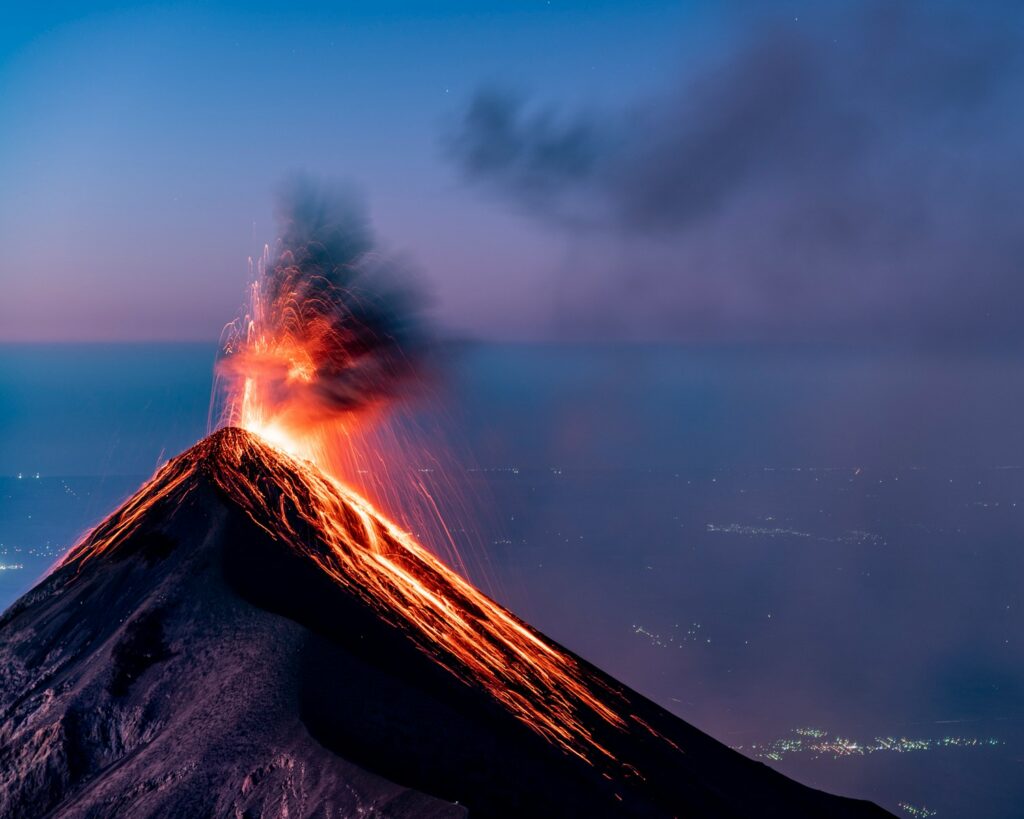The extinction of dinosaurs approximately 66 million years ago marks one of the most dramatic turning points in Earth’s biological history. While a massive asteroid impact has been widely accepted as the primary cause of this mass extinction event, recent scientific research has increasingly highlighted the potential role of volcanic activity in this global catastrophe. The Deccan Traps, a massive volcanic province in present-day India, experienced intense eruptions around the same period, leading scientists to question whether these volcanic events worked in tandem with the asteroid impact to create the perfect extinction storm. This article explores the complex relationship between volcanic activity and dinosaur extinction, examining how massive eruptions may have contributed to the demise of these magnificent creatures that had dominated Earth for over 165 million years.
The Timing of Volcanic Activity

The Deccan Traps volcanic eruptions represent one of the largest volcanic events in Earth’s history, spewing an estimated 1.3 million cubic kilometers of lava across western India. Precise dating techniques have revealed that these eruptions intensified significantly around the time of the Cretaceous-Paleogene (K-Pg) boundary 66 million years ago, coinciding with the dinosaur extinction. Some research suggests that the most intense phase of volcanic activity occurred just before and after the asteroid impact, with eruptions spanning approximately a million years. This temporal overlap has led many scientists to reconsider the possibility that volcanic activity was not merely coincidental but potentially a significant contributing factor to the mass extinction. The timing of these events presents a compelling case for examining volcanic contributions more closely.
Atmospheric Effects of Massive Eruptions

When volcanoes of the magnitude seen in the Deccan Traps erupt, they don’t simply release lava—they inject enormous quantities of gases and particulates into the atmosphere. These eruptions would have released massive amounts of carbon dioxide, sulfur dioxide, and other greenhouse gases, dramatically altering Earth’s climate. The sulfur aerosols would have initially caused global cooling by reflecting sunlight into space, potentially creating a “volcanic winter” effect. The accumulated carbon dioxide would have triggered a greenhouse effect following this cooling phase, leading to extended global warming. These dramatic climate oscillations would have placed enormous stress on ecosystems worldwide, making it increasingly difficult for temperature-sensitive species like dinosaurs to adapt quickly enough to survive.
The Scale of the Deccan Traps

To truly comprehend the potential impact of the Deccan Traps on dinosaur extinction, one must understand the immense scale of these volcanic formations. The eruptions created one of the largest igneous provinces on Earth, covering over 500,000 square kilometers of western and central India with multiple layers of basaltic lava flows. In some areas, these layers accumulated to thicknesses exceeding 2 kilometers. Individual eruptions would have dwarfed any volcanic activity witnessed in human history, with some flows extending over 100 kilometers from their source. The sheer volume of material expelled during these eruptions suggests that their environmental impact would have been global in scale, affecting climate patterns worldwide and potentially creating conditions hostile to large terrestrial vertebrates like dinosaurs.
Chemical Evidence in the Fossil Record
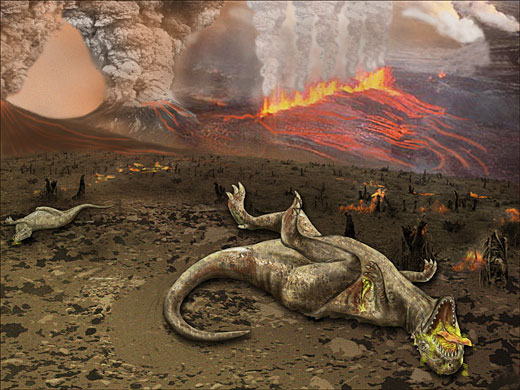
The fossil record provides crucial evidence for understanding the environmental conditions during the extinction event. Chemical analyses of fossils and sediments from the K-Pg boundary show significant changes in carbon and oxygen isotope ratios, indicating major disturbances in the carbon cycle and ocean temperatures. Mercury levels in sediments also spike around this time, which many scientists attribute to intense volcanic activity, as volcanoes are significant sources of mercury emissions. Additionally, specific rare earth elements associated with volcanic eruptions appear in elevated concentrations in boundary layers worldwide. These chemical signatures suggest that volcanic activity was indeed having global effects on the environment at precisely the time dinosaurs and many other species were experiencing severe stress and ultimately extinction.
Volcanic Gases and Oceanic Acidification

The Deccan Traps eruptions would have released enormous quantities of carbon dioxide into the atmosphere, much of which would eventually be absorbed by the world’s oceans. This process leads to ocean acidification, a phenomenon that can devastate marine ecosystems by interfering with the ability of organisms to form calcium carbonate shells and skeletons. Evidence from marine sediments indicates that significant oceanic acidification did occur during this period, coinciding with mass extinctions in marine ecosystems. This disruption of ocean chemistry would have collapsed marine food webs, indirectly affecting terrestrial ecosystems that depended on healthy oceans. By undermining primary productivity in both marine and terrestrial environments, volcanic emissions could have created cascading food web collapses that ultimately affected large predators like dinosaurs.
The Pulse Pattern of Deccan Trap Eruptions
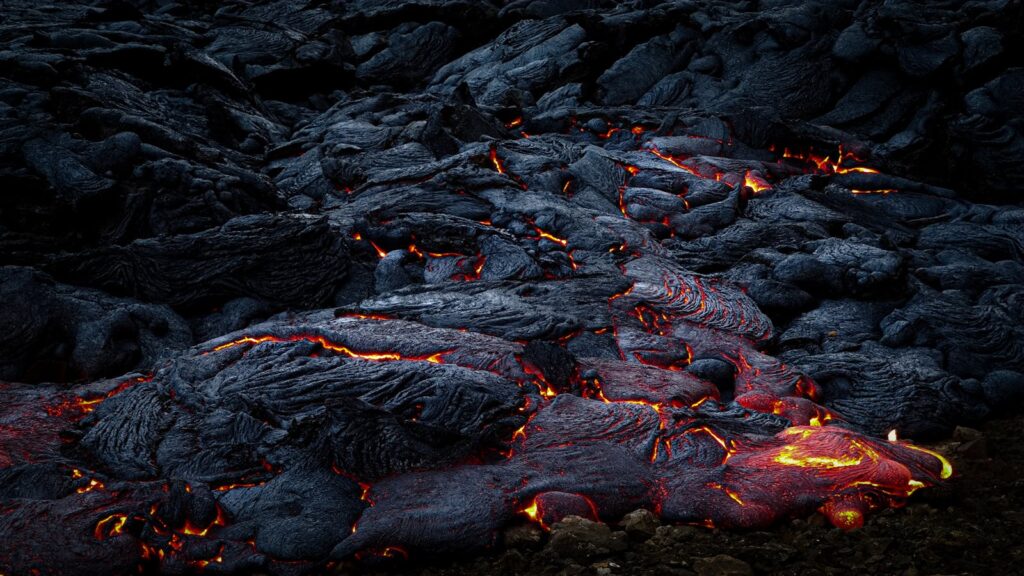
Recent research has revealed that the Deccan Traps did not form through continuous volcanic activity but rather through distinct pulses of intense eruptions separated by periods of relative quiescence. This pattern may have been particularly devastating for Earth’s ecosystems, as it would have prevented adaptive recovery between catastrophic events. Each new pulse of volcanic activity would have created fresh environmental stresses just as ecosystems were beginning to recover from previous eruptions. Geological evidence suggests that some of the most intense pulses occurred very close to the K-Pg boundary, with one major pulse potentially triggered by seismic waves from the asteroid impact itself. This pulsed pattern of eruptions may explain why the extinction was so comprehensive, affecting species across numerous habitats and ecological niches.
The One-Two Punch Hypothesis

Many scientists now support what has become known as the “one-two punch” hypothesis of dinosaur extinction. This theory proposes that the Deccan Traps eruptions had already placed global ecosystems under significant stress by releasing greenhouse gases and causing climate perturbations over hundreds of thousands of years. These ongoing volcanic effects weakened biodiversity and made species more vulnerable to extinction. When the asteroid struck Mexico’s Yucatán Peninsula, creating the Chicxulub crater, it delivered the final devastating blow to already compromised ecosystems. Under this model, neither the asteroid impact nor volcanic activity alone would have caused such a severe mass extinction, but their combined and sequential effects created the perfect conditions for a global biological catastrophe.
Evidence Against Volcanic Causation
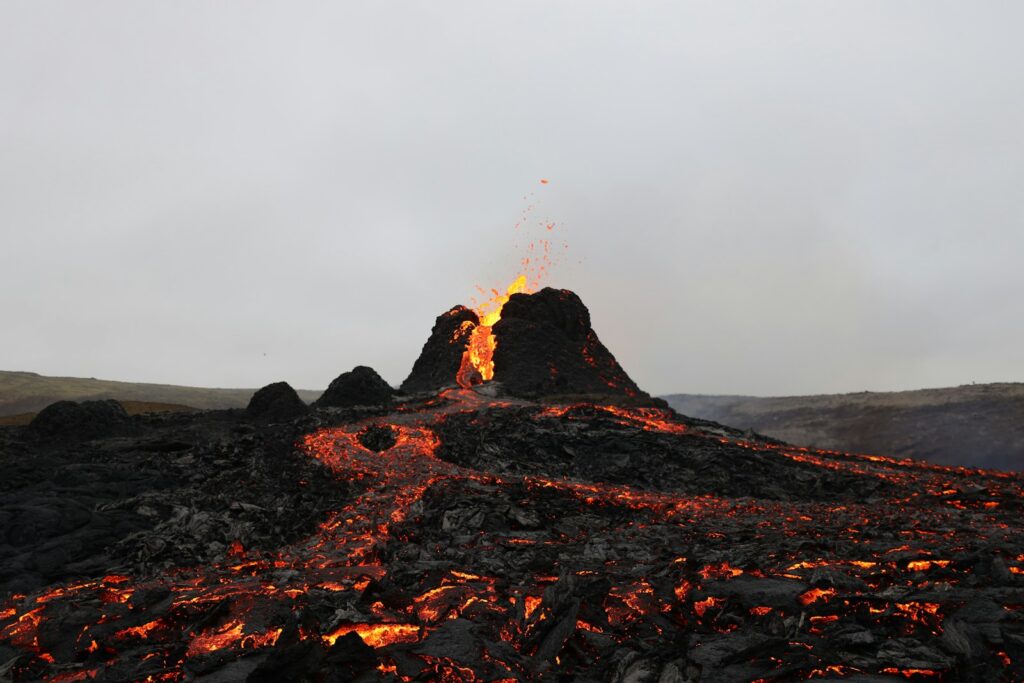
Despite mounting evidence for volcanic contributions to the extinction event, some scientists remain skeptical about attributing a primary role to the Deccan Traps. Critics point out that other massive flood basalt events in Earth’s history, such as the Siberian Traps (associated with the Permian extinction) and the Central Atlantic Magmatic Province, involved even larger volcanic episodes without an accompanying asteroid impact. They argue that the precise coincidence of the Chicxulub impact with the extinction boundary remains the most compelling evidence for the asteroid’s primary role. Additionally, some research suggests that while the Deccan Traps eruptions were certainly significant, their most intense phases may not align perfectly with the extinction timeline. These counterarguments highlight the continuing scientific debate and the complexity of disentangling multiple potential causes of this extinction event.
Comparing Modern Volcanic Effects
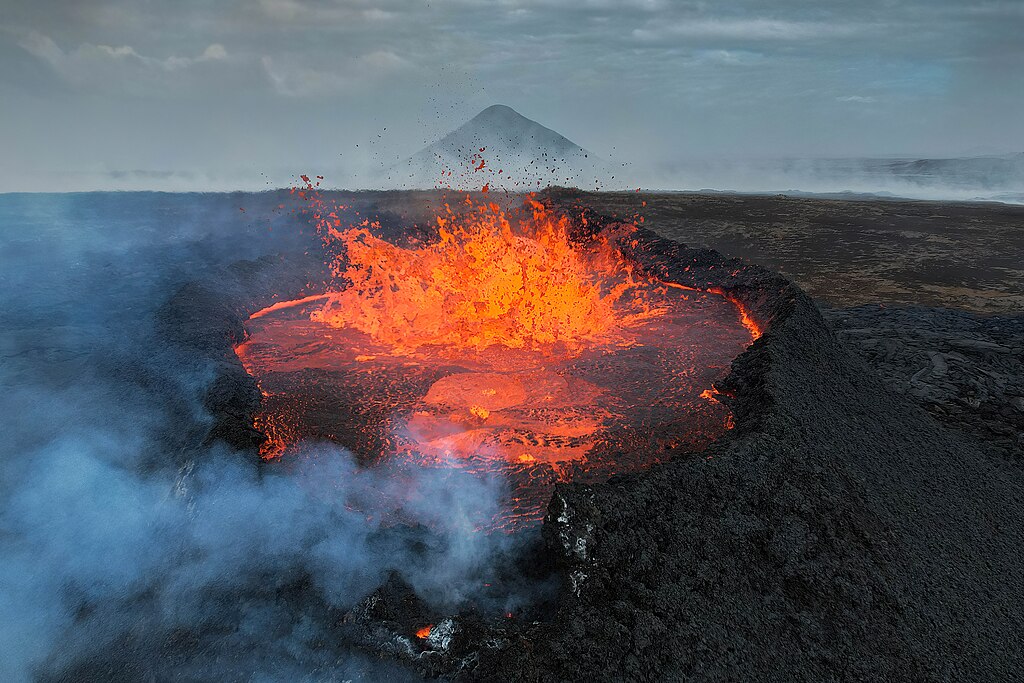
Modern volcanic eruptions provide valuable insights into how the Deccan Traps might have affected ancient environments, albeit on a much smaller scale. The 1991 Mount Pinatubo eruption in the Philippines, for instance, injected approximately 20 million tons of sulfur dioxide into the stratosphere, causing global temperatures to drop by about 0.5°C for over a year. The Deccan Traps eruptions would have released sulfur dioxide on a scale hundreds or thousands of times greater than Pinatubo. Similarly, studies of the 1783 Laki eruption in Iceland, which caused widespread famine and environmental degradation across Europe, help scientists understand how volcanic gases can disrupt climate patterns and affect agriculture. By scaling up these observed effects, researchers can model the potential global impact of the Deccan Traps, providing further evidence for volcanic contributions to dinosaur extinction.
Extinction Patterns and Volcanic Activity
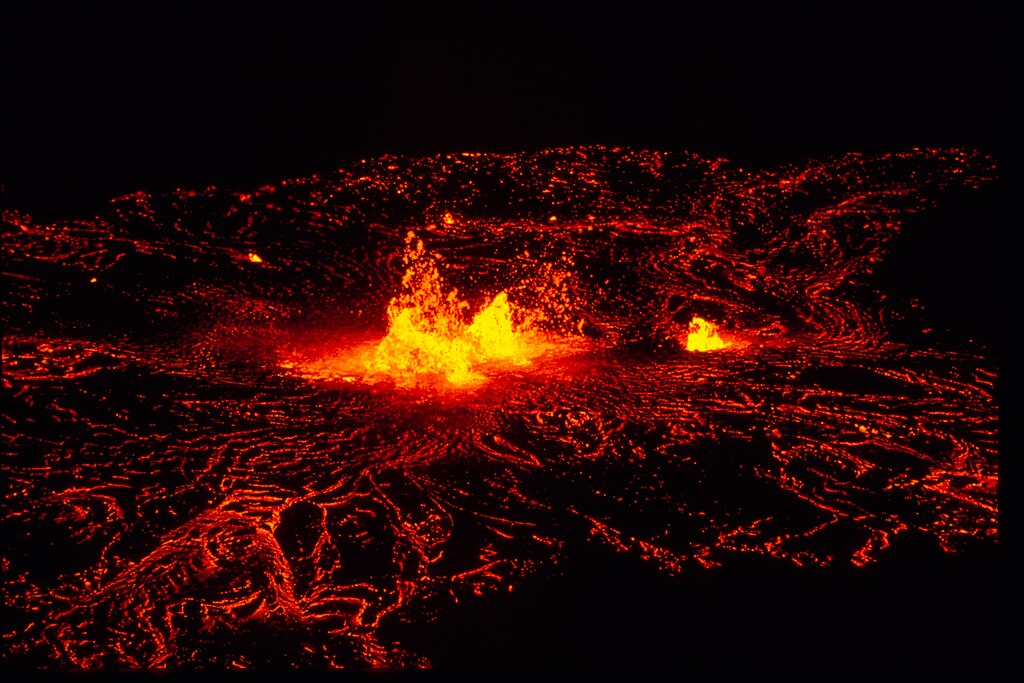
The pattern of species extinction during the K-Pg event provides clues about potential volcanic contributions. Some evidence suggests that certain species were already in decline before the asteroid impact, which aligns with the timeframe of intensifying Deccan Traps activity. Different groups of organisms show varying extinction rates, with some marine groups displaying gradual declines that might be consistent with the extended stress of volcanic climate effects. Plants show evidence of significant disturbances in the lead-up to the boundary, with changes in pollen assemblages indicating environmental stress. The geographic pattern of extinctions also shows interesting correlations, with some regions experiencing more severe biodiversity loss than others, potentially related to their proximity to volcanic activity or their vulnerability to climate disruptions caused by volcanic emissions.
Scientific Debate and Ongoing Research
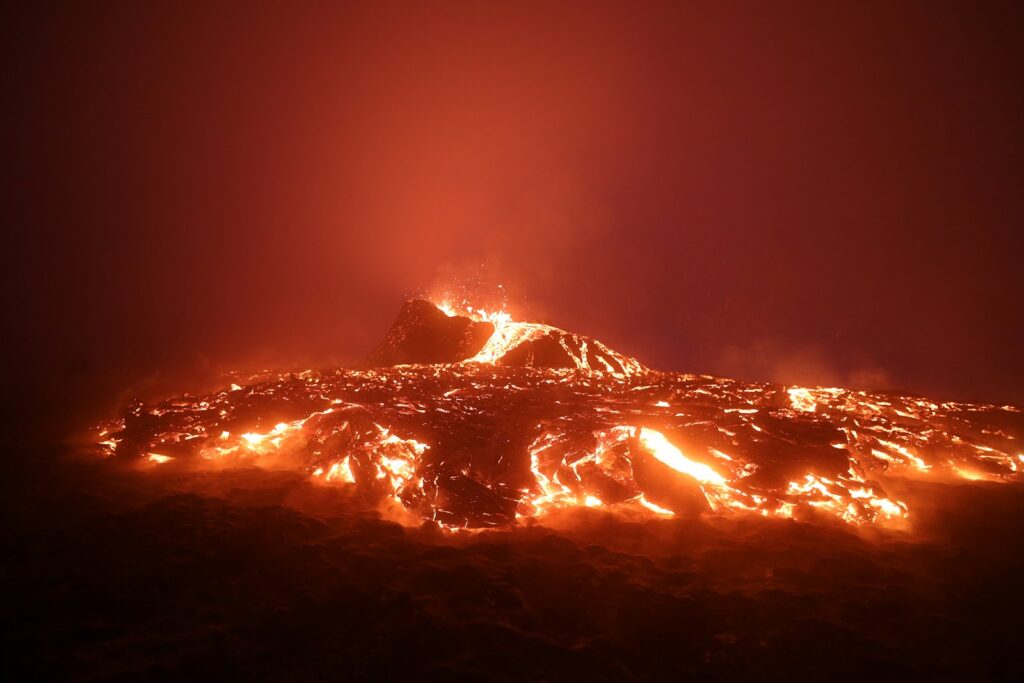
The question of volcanic contributions to dinosaur extinction remains an active area of scientific investigation and debate. New analytical techniques continue to provide increasingly precise dating of both the Deccan Traps eruptions and the K-Pg boundary, helping to clarify the temporal relationship between these events. Advanced climate modeling allows scientists to better understand how volcanic emissions would have affected global temperature, precipitation patterns, and ocean chemistry. Paleontologists continue to discover and analyze new fossil evidence that provides insights into extinction patterns and environmental conditions before, during, and after the K-Pg boundary. Interdisciplinary collaboration between geologists, paleontologists, geochemists, and climate scientists has been crucial in developing a more nuanced understanding of this complex extinction event, highlighting how multiple factors likely contributed to the disappearance of non-avian dinosaurs.
Implications for Understanding Other Mass Extinctions
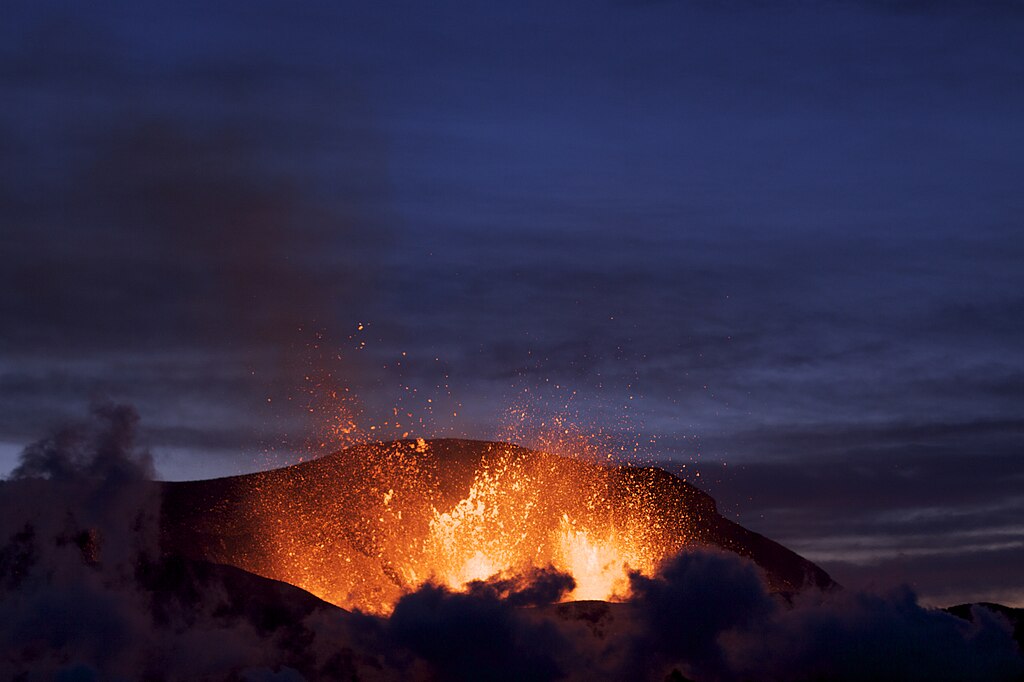
Research into the potential volcanic contributions to dinosaur extinction has broader implications for understanding other mass extinction events throughout Earth’s history. Four of the “Big Five” mass extinctions show correlations with large igneous province formations similar to the Deccan Traps. The end-Permian extinction, the most severe mass extinction in Earth’s history, coincided with the formation of the Siberian Traps and shows clear evidence of volcanic contributions to environmental degradation. The end-Triassic extinction similarly correlates with the Central Atlantic Magmatic Province. By understanding how volcanic activity may have contributed to the K-Pg extinction, scientists gain valuable insights into extinction mechanisms that may apply to other events in Earth’s history. This research also provides context for understanding current anthropogenic climate change and its potential effects on biodiversity, as human activities now rival geologic forces in their impact on global systems.
Lessons for Modern Climate Change

The study of how volcanic activity may have contributed to dinosaur extinction offers valuable lessons for understanding modern climate change. While the Deccan Traps released enormous quantities of greenhouse gases over hundreds of thousands of years, human activities are now releasing comparable amounts over just centuries or decades—a much more rapid rate. Understanding how ancient ecosystems responded to volcanic climate forcing helps scientists predict how modern ecosystems might respond to anthropogenic climate change. The potential for tipping points, feedback mechanisms, and ecosystem collapses observed in the fossil record provides sobering insights into possible future scenarios. By studying how multiple environmental stressors—like those potentially created by the combination of volcanic activity and asteroid impact—can interact to cause extinctions, scientists gain a crucial perspective on how multiple modern stressors might similarly interact to threaten current biodiversity.
The Role of the Deccan Traps in Dinosaur Extinction
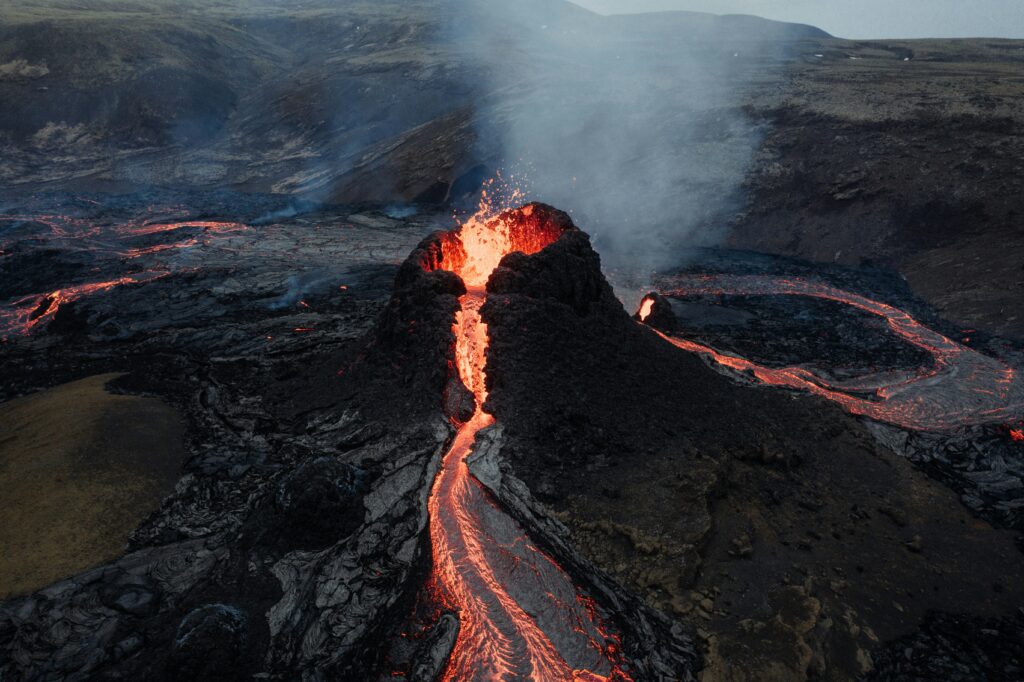
The question of whether volcanic eruptions helped wipe out the dinosaurs remains complex, but the scientific consensus increasingly points toward a multi-causal explanation. While the Chicxulub asteroid impact delivered a sudden, catastrophic blow to Earth’s ecosystems, the Deccan Traps eruptions likely created long-term environmental stresses that weakened global biodiversity and potentially amplified the impact’s effects. This complex interplay of catastrophic events serves as a reminder of Earth’s dynamic nature and the vulnerability of even the most dominant species to environmental change. As research continues to refine our understanding of this pivotal moment in Earth’s history, the story of dinosaur extinction stands as a powerful case study in how multiple environmental factors can combine to reshape the entire trajectory of life on our planet.

